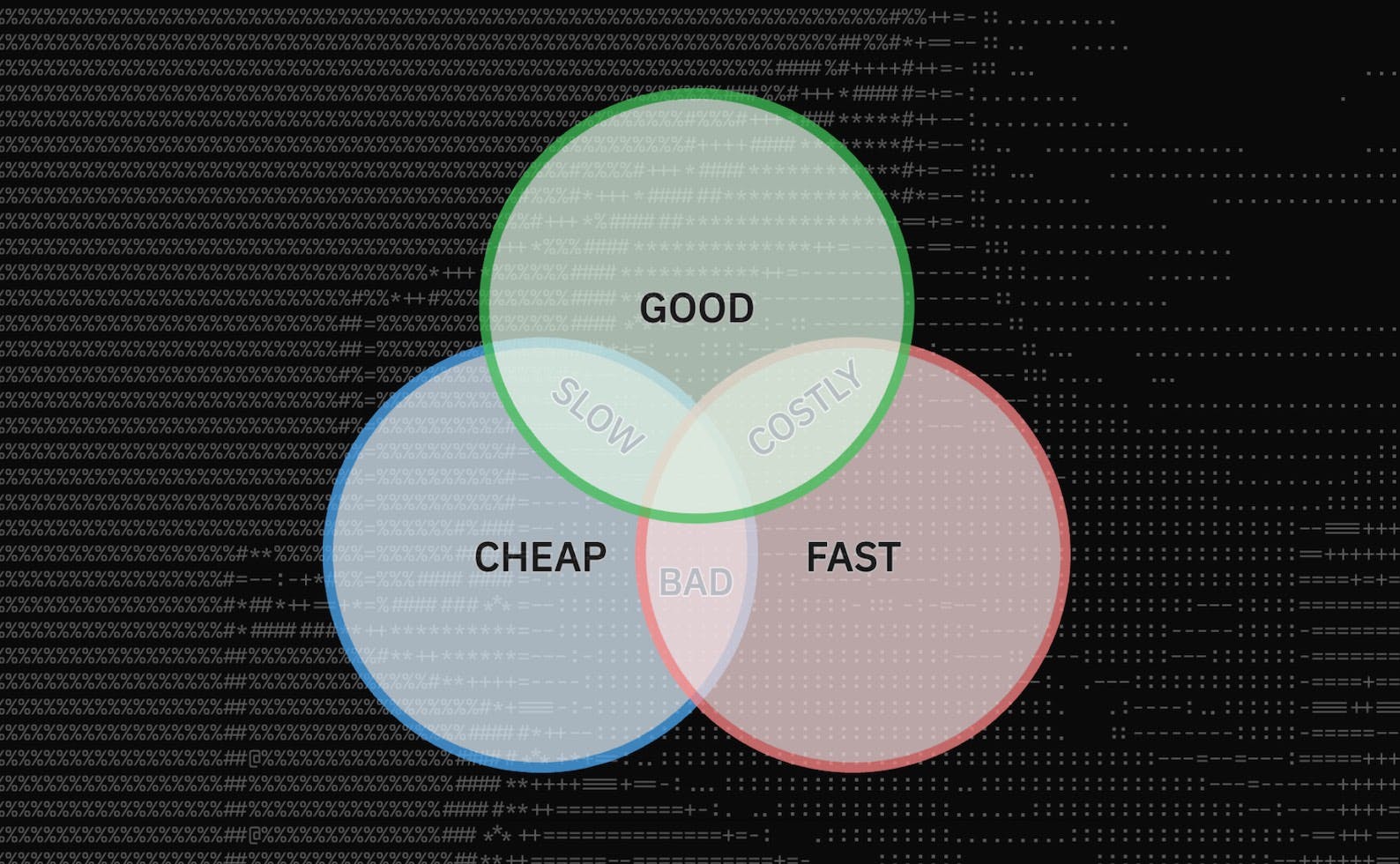As a member of the Daytona team, I often find myself in conversations about the intricate balance between development velocity, efficiency, and quality. It's a complex dance, with each element pulling and pushing against the others in a dynamic interplay. Let's dive deeper into this fascinating topic.
Velocity, cost efficiency, and quality are interconnected tensions that developers often consider in isolation, but they must be balanced against the backdrop of the business, which values security, compliance, safety, and privacy.
The Tug of War in Development
Imagine a picture with vectors, each representing a key aspect of development: velocity, efficiency, and quality. As you tug on one vector, say velocity, it might pull on cost efficiency or quality. You might even need to inject extra energy into the system to maintain balance.
Many developers and tool companies tend to view these elements in isolation. They might focus heavily on velocity or efficiency or perhaps on quality through continuous integration or testing. But the reality is all these elements are interconnected.
The Business Backdrop
As you adjust these tensions, you're essentially pulling on a surface, affecting not only the technical aspects but also the business requirements.
And so there are tensions between the three things, kind of like the old adage, "fast, cheap, good, pick two."

This tug of war doesn't happen in a vacuum. It's happening against the backdrop of a business that cares about security, compliance, safety, and privacy. As you adjust these knobs, you're also moving the business landscape.
For instance, you can boost developers' velocity by giving them free rein. But this might impact costs as they start spinning up numerous cloud services. It could also impact security if they start using technologies that have yet to be vetted or controlled.
In other words, a single change can have multiple impacts. A boost in velocity can affect cost efficiency and, beneath it all, the business's security and safety.
The Role of Developer Platforms
So, what's the role of a developer platform like Daytona in all this?
Firstly, it should help developers balance these three tensions. There's an optimal set for these elements, a trade-off we're willing to make between quality and velocity. This might take the form of technical debt, a willingness to break stuff, or a decision to spend more on cloud services.
Secondly, if a business is purchasing the platform, it should also help constrain these three axes within the business's needs. In our vector picture, the circle of security, compliance, safety, and privacy is the surface on which you can play. It's the boundary.
You can't move the developer velocity axis outside the security boundaries. After all, we're talking about a business with governance and compliance requirements.
In essence, developer platforms like Daytona allow developers to make changes while ensuring that the business can constrain those changes within its needs.
The Balancing Act
Balancing development velocity, efficiency, and quality is a complex task. It requires a deep understanding of the interplay between these elements and the business backdrop against which they operate.
But with the right tools and mindset, it's a task that can lead to more productive, efficient, and high-quality development processes. And that's what we're all about at Daytona.
The circle of security, compliance, safety, and privacy provides the boundaries within which developers can operate, allowing them to make changes while respecting the constraints set by the business.



